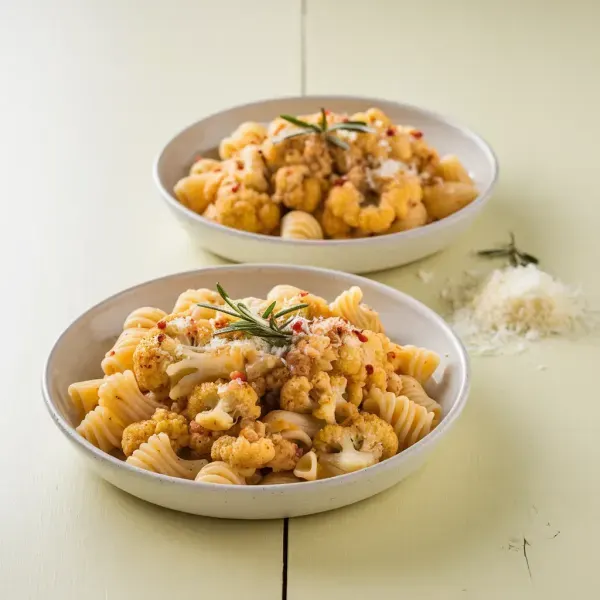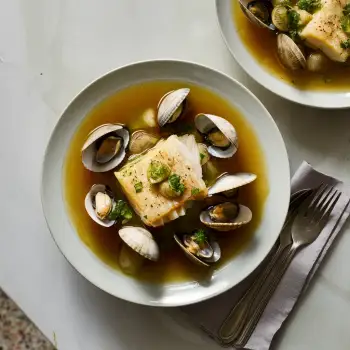
 45 minutes
45 minutesA comforting pasta dish with a rich, buttery cauliflower sauce.


Medium Cauliflower, halved, florets cut into bite-sized pieces, core, stalks, and leaves chopped finely
0 lb
0.25 fluid ounces
Medium White Onion, diced
each
Garlic Clove, smashed
each
to taste
teaspoons
tablespoons
tablespoons
Pennette Pasta
0 lb
Parmigiano-Reggiano, freshly grated
cups
Coarse Fresh Bread Crumbs
cups
Fresh Rosemary, minced
teaspoons
1. Prepare and Cook Cauliflower
Halve the cauliflower and reserve the leaves and core. Cut the florets into bite-sized pieces, and chop the core, stalks, and leaves finely. In a large pot, heat the olive oil over medium heat. Add the diced onion, smashed garlic, and the chopped cauliflower parts (including the core, stalks, and leaves). Cook for about three minutes, stirring occasionally. Once the leaves begin to wilt, reduce the heat to low.
2. Simmer Cauliflower Florets
Add the cauliflower florets and sprinkle in the hot red pepper flakes. Pour in enough water to barely cover the florets and bring the mixture to a gentle simmer. Cover the pot and let it cook for 22-25 minutes until the cauliflower is very soft.
3. Finish Cauliflower Ragu
Once the cauliflower is soft, stir in the unsalted butter and season with Maldon salt to taste.
4. Cook Pennette and Combine
Bring 6 quarts of water to a boil in a large pot. Add 3 tablespoons of kosher salt, then cook the pennette until just al dente. Drain the pasta, reserving a cup of the pasta water. Combine the cooked pasta with the cauliflower ragu in the pot. Add a splash of the reserved pasta water to help the sauce coat the pasta evenly. Stir in the freshly grated Parmigiano-Reggiano.
5. Serve with Bread Crumbs and Rosemary
Transfer the pasta mixture to a serving bowl. Finish by sprinkling the dish with coarse fresh bread crumbs and minced fresh rosemary. Serve with additional grated cheese on the side for those who want an extra cheesy touch.
Before adding the cauliflower to the ragu, consider roasting it with olive oil, salt, and pepper. This step enhances the natural sweetness and adds a nutty, caramelized depth to the dish.
After the aromatics cook, deglaze the pan with a dry white wine. This not only helps embed all those flavorful browned bits into the sauce but also adds another layer of complexity.
Use a base of finely chopped onions, garlic, and herbs like thyme or rosemary sautéed in quality olive oil. Allow the onions and garlic to slowly caramelize.
Allow the ragu to simmer gently for at least 30 minutes. This gives time for all the flavors to meld and the cauliflower to break down, becoming part of the sauce. Patience here is crucial.
Adding a splash of Worcestershire sauce, soy sauce, or a pinch of anchovy paste can amp up the umami. This is key to mimicking the depth typically achieved in meat-based ragus.




Comments (0)